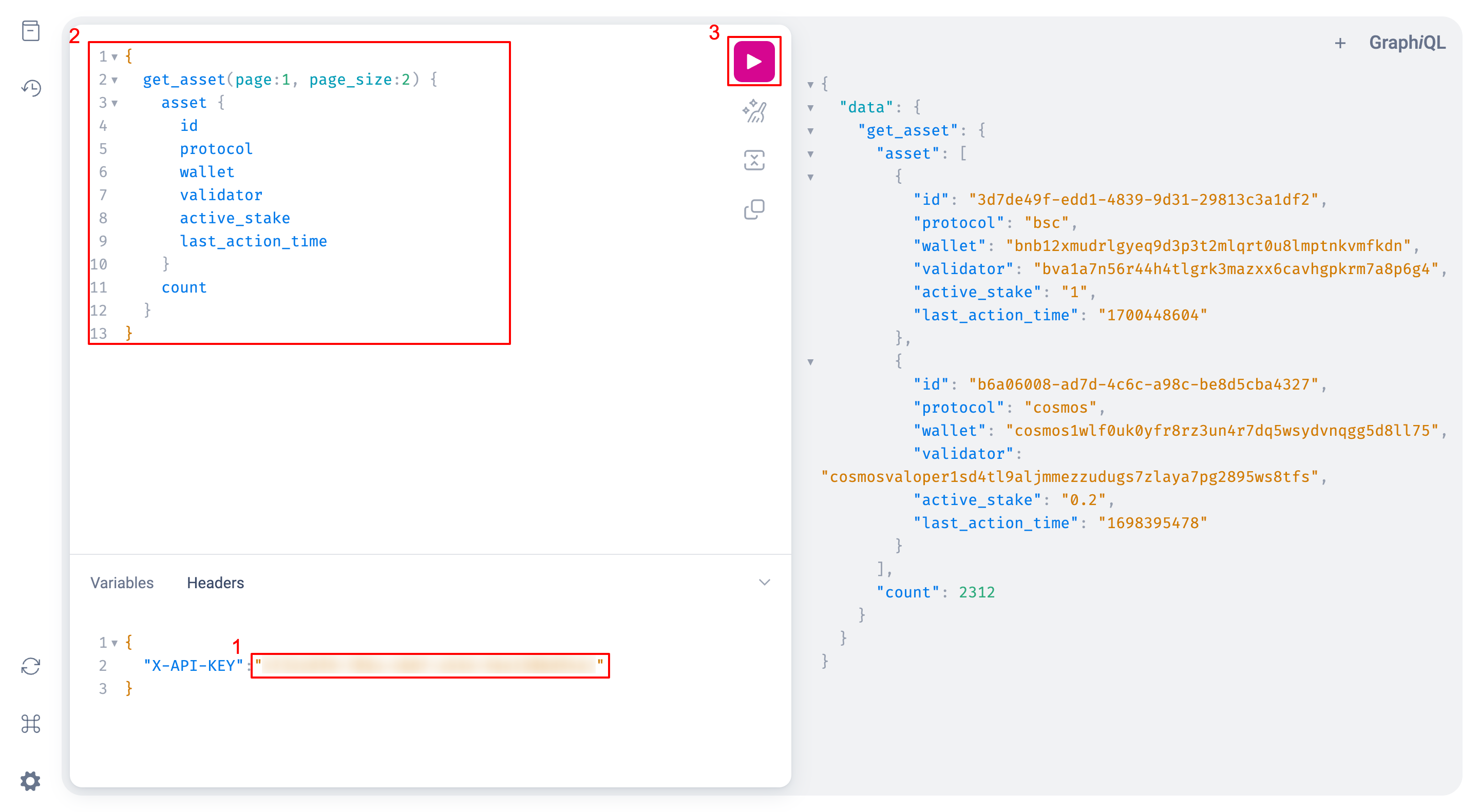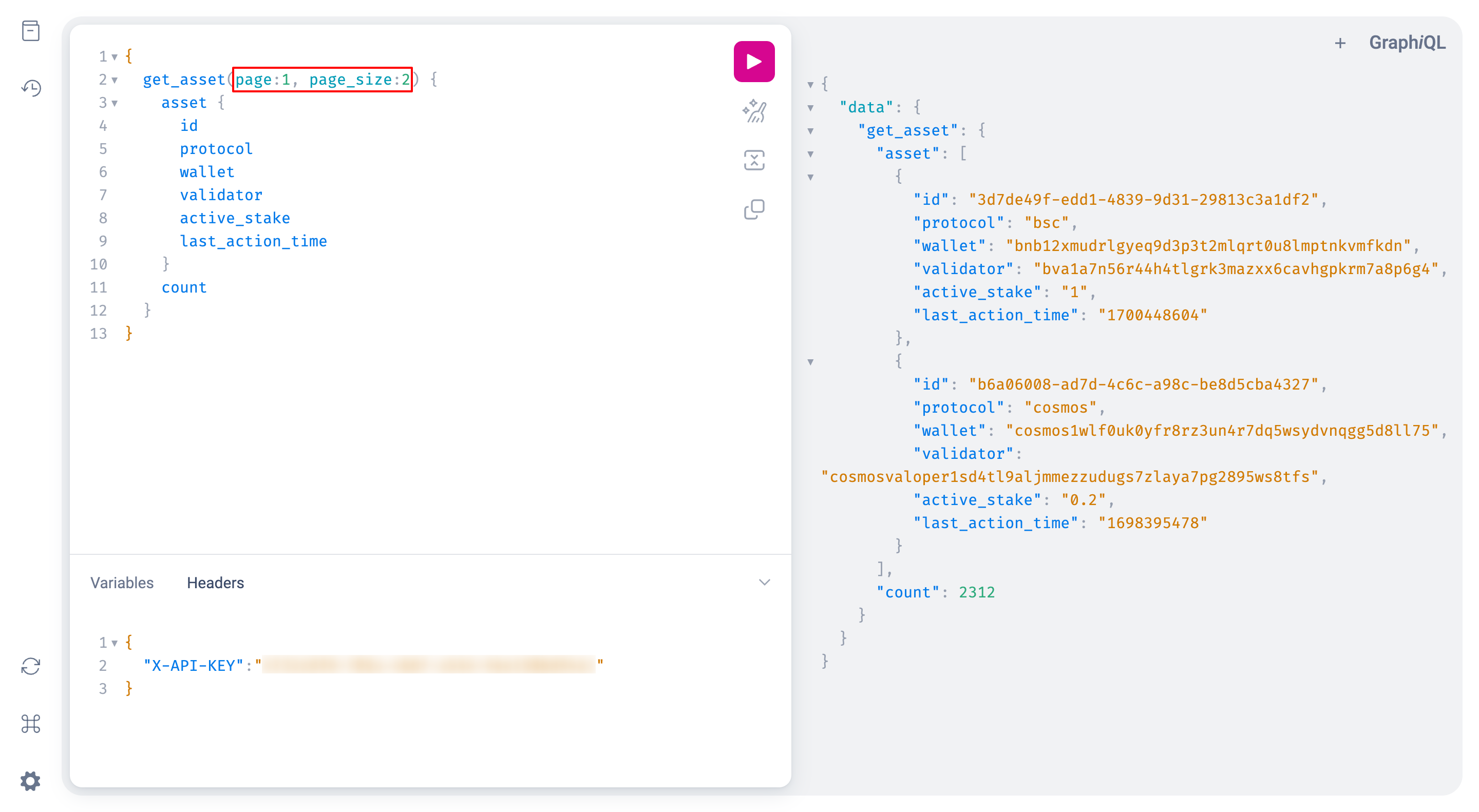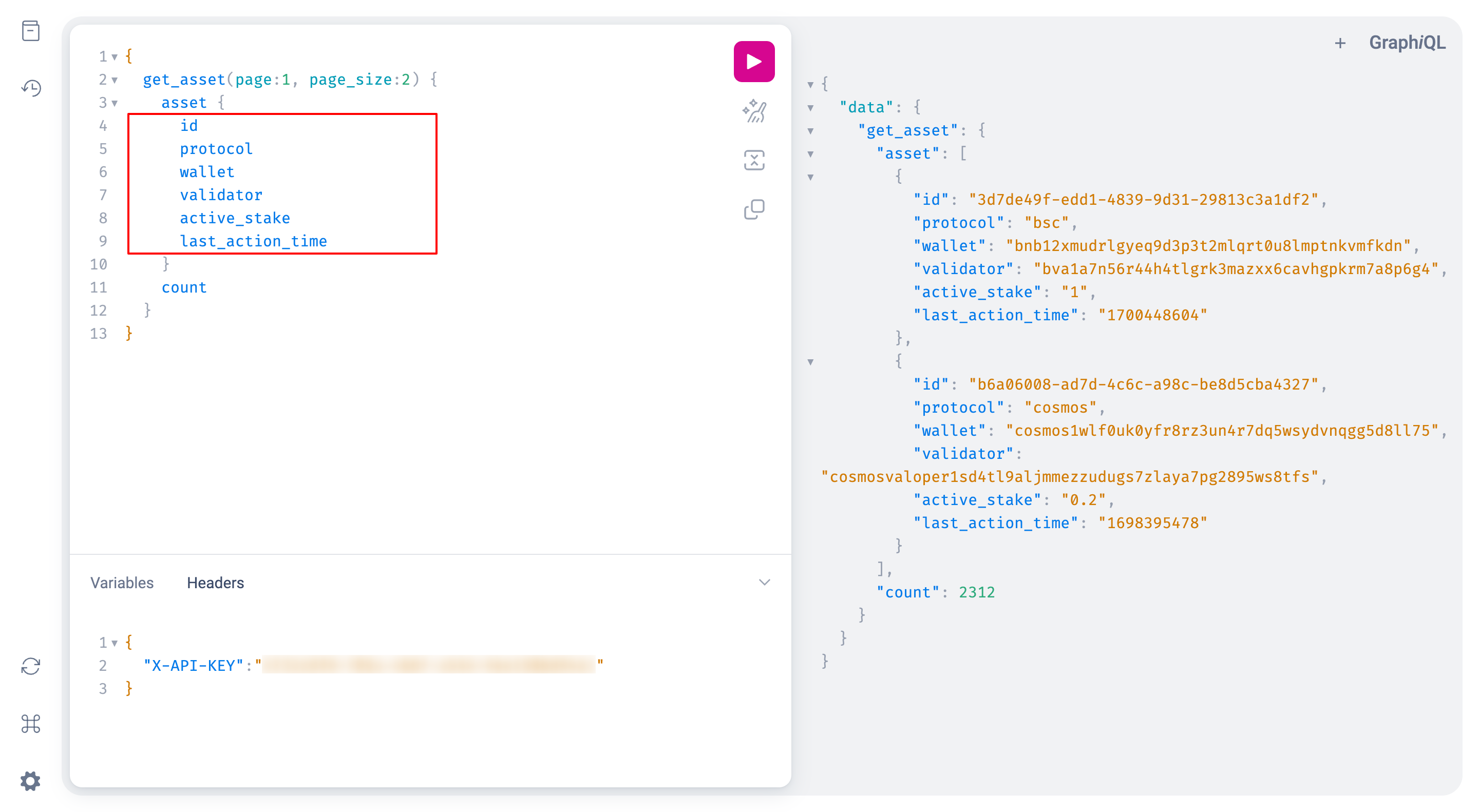Get Asset
1 Overview
An asset represents a user's stake within our platform. It serves as a repository of key staking-related data, enabling users to track their staking progress, rewards, and other important metrics. Users can leverage GraphQL to retrieve data by sending queries to a GraphQL server. Here's a step-by-step guide on how users can use GraphQL to get assets.
2 Get Asset
Open GraphQL Playground, input your access token and query, then send the request.

Argument

For more available arguments, check the list below:
| Key | Type | Required | Detail |
|---|---|---|---|
sort_field | String | ❌ | Customize sorting criteria for results |
reverse | Boolean | ❌ | Reverse sort order with true |
protocols | String Array | ❌ | Filter by specific protocols |
keywords | String Array | ❌ | Filter for wallet and validator, case insensitive |
start_time | String | ❌ | Filter after a specified start_time, represented in epoch time format |
end_time | String | ❌ | Filter after a specified end_time, represented in epoch time format |
id | String | ❌ | Unique ID of the asset |
page | Integer | ❌ | Page number |
page_size | Integer | ❌ | The number of results returned on each page |
Query Fields

For more available fields, check the list below:
id: A unique identifier assigned to each asset.protocol: The name of the protocol associated with the asset.wallet: The user's wallet address linked to the asset.validator: The address of the validator to which the asset is associated.active_stake: The effective stake amount within the asset.total_reward: The sum of received rewards and claimable rewards.received_reward: The amount of reward that users have received.claimable_reward: The amount of reward that users can claim. The process for claiming rewards may differ based on the protocol. For example, Ethereum users need to manually initiate the claim action, while SUI users automatically claim rewards when unstaking.last_action_time: The timestamp of the user's last action, including stake, unstake, claim, and more.pending_stake: Some protocols require a waiting period for the stake amount to become effective. During this time, the staked amount resides in the pending stake field.unstaking: The sum of the amounts in theunstaking_in_progressandunstaking_withdrawablefields.unstaking_withdrawable: The fund that is waiting for the user to initiate withdrawal to their wallet. This usually requires the user to create a withdrawal action within our platform.unstaking_in_progress: This field represents the amount after a user has initiated an unstake but the funds have not yet settled in the user's wallet.
Request Example
{
get_asset(page:1, page_size:2) {
asset {
id
protocol
wallet
validator
active_stake
last_action_time
}
count
}
}Response Example
asset: The array of individual activity objects, each containing the fields specified in the aboveQuery Fields.count: Total number of assets the user possesses.
{
"data": {
"get_asset": {
"asset": [
{
"id": "3d7de49f-edd1-4839-9d31-29813c3a1df2",
"protocol": "bsc",
"wallet": "bnb12xmudrlgyeq9d3p3t2mlqrt0u8lmptnkvmfkdn",
"validator": "bva1a7n56r44h4tlgrk3mazxx6cavhgpkrm7a8p6g4",
"active_stake": "1",
"last_action_time": "1700448604"
},
{
"id": "b6a06008-ad7d-4c6c-a98c-be8d5cba4327",
"protocol": "cosmos",
"wallet": "cosmos1wlf0uk0yfr8rz3un4r7dq5wsydvnqgg5d8ll75",
"validator": "cosmosvaloper1sd4tl9aljmmezzudugs7zlaya7pg2895ws8tfs",
"active_stake": "0.2",
"last_action_time": "1698395478"
}
],
"count": 2312
}
}
}Updated about 2 months ago